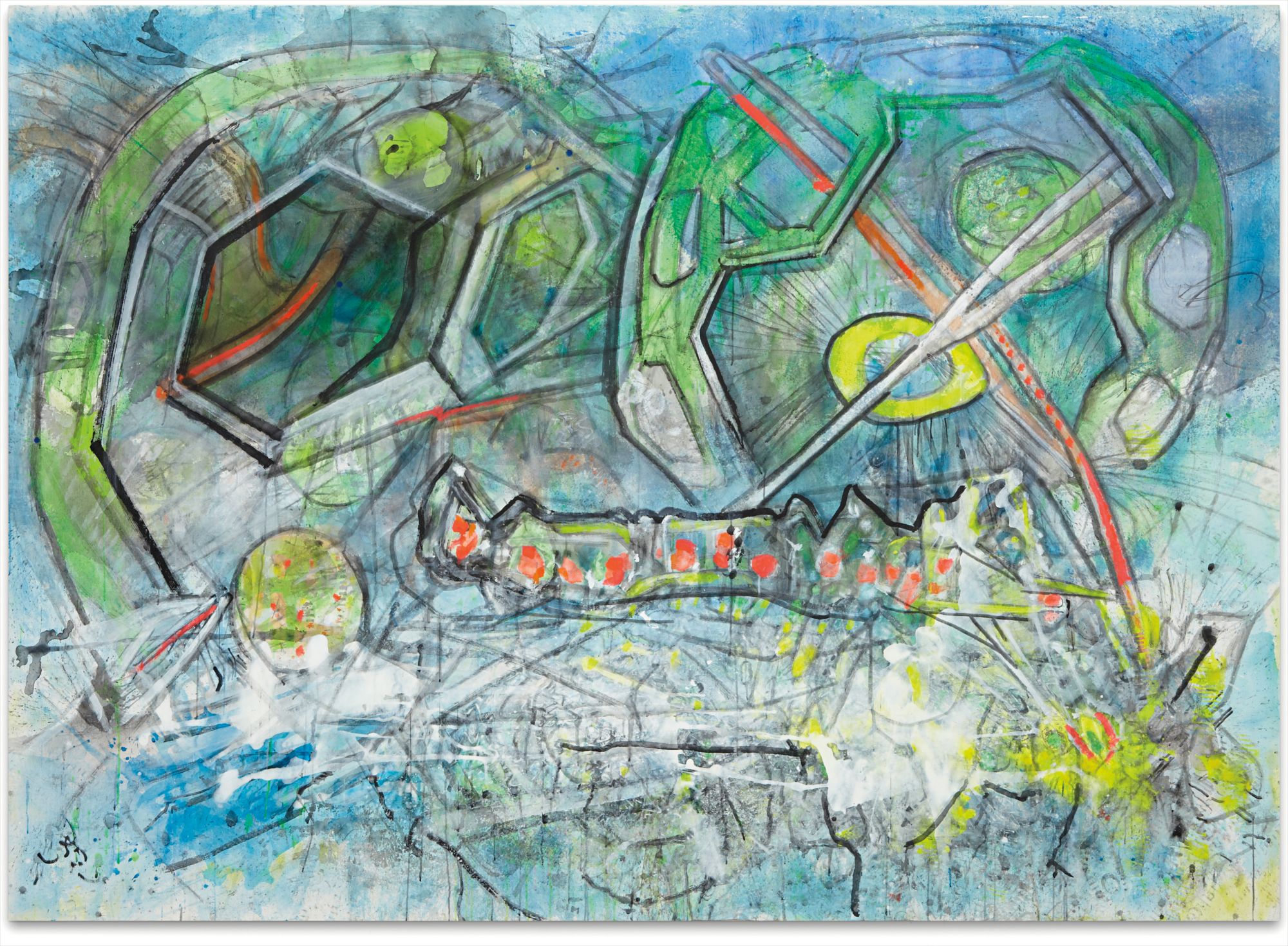

23
Matta
Dharmasutra
Full-Cataloguing
Matta’s concern with the metaphysical is evident in the present lot. The influence of his futurist predecessors and surrealist contemporaries, including Salvador Dalí and André Dérain, clearly manifests itself in Dharmasutra, both in style and philosophy. Matta formulates the principle of “psychological morphology”, encapsulating the notions that comprise his prolific artistic practice. He states, “I call psychological morphology the graph of transformations due to the absorption and emission of energy on the part of the object, from its initial appearance to its final form in the geodesic psychological medium.”
Inspired by contemporary Joan Miró’s conception of space and the genesis of amorphous forms, Matta’s floating, mechanized figures reference Miró’s own interpretation of controlled chaos, as in the Spanish master’s Birth of the World, 1925 (Museum of Modern Art, New York).
Matta’s stylistic influence can be traced to his early days among the surrealists in Paris. For example, in one of the artist’s earlier masterpieces, Vertigo of Eros, 1944 (Museum of Modern Art, New York), the viewer can discern Matta’s ongoing concern with the mystical and dream-like landscape. Dharmasutra encapsulates the artist’s distinctive style representing an “inscape,” conceived as projections of his own psyche.The present lot skillfully references the earlier work of Vertigo of Eros, by conjuring the imagined elusiveness of the unconscious.
Describing his artistic approach, inextricable from that of the surrealists and subsequently, the abstract expressionists, in the representation of movement and space, Matta noted, “I was interested in other spaces to do with forms drawn from non-Euclidean geometry and the idea of entering these spaces. These structures do not rely on the sense of space, as we know it. It is a space without limits and which transforms itself in time– a mutant space.”
Matta’s relationship with surrealism, the unconscious and the imagery generated in the spaces therein feature exceptionally in the present lot. A cosmic work that is both abstract and figurative, the work embodies an optimal vantage point that Matta had strived toward for the greater part of his career.
Matta
Chilean | B. 1911 D. 2002After graduating from university in Santiago in 1935 with a degree in architecture, Roberto Matta traveled to Europe where he met André Breton, the founder of the Surrealist movement in Europe. In 1938, he began painting and moved to the United States for ten years. During this period he sought to evoke the human psyche in his work, inspired by Freudian psychoanalysis. Matta's works became increasingly dominated by a socio-political element, which broke from the conventions of Surrealism.
Matta was also a seminal figure in Abstract Expressionism but broke away from this too to develop a highly personal artistic vision. His mature works blend abstraction with elements of figuration and fantastically-conceived, multi-dimensional space. He was heavily involved in the social movements of the 1960s and '70s and a strong supporter of Salvador Allende's socialist government.